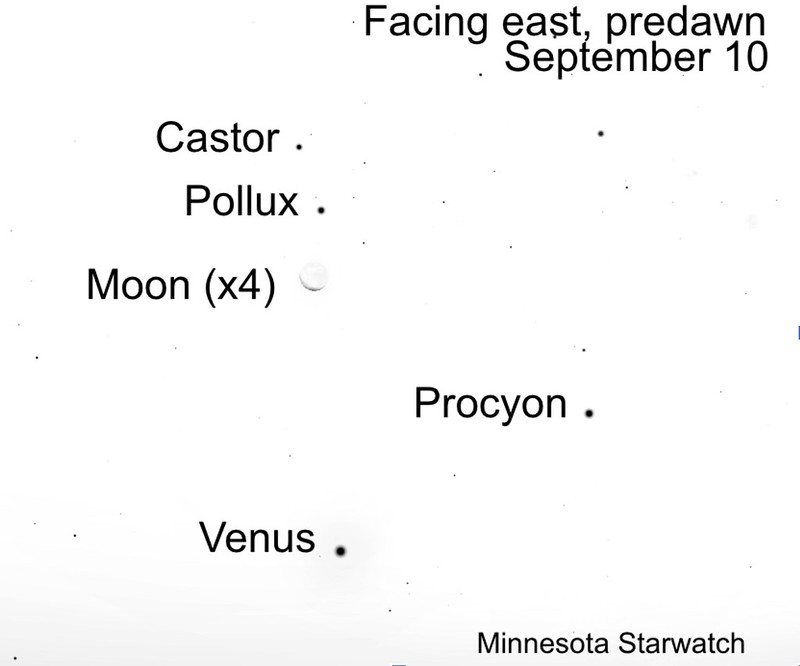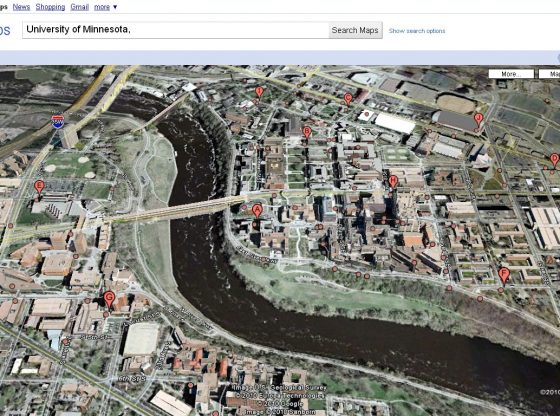Embrace the beauty of September skies with the ethereal pairing of Jupiter and Saturn, the allure of fall constellations, and the mesmerizing brightness of the Summer Triangle. Plus, witness the magic of a blue moon as fall ushers in with the autumnal equinox.
In September the fall constellations move to front and center in the south. They include Aquarius and Pisces, which are famous but dim. On the bright side, this year Jupiter joins Saturn in the evening sky.
Jupiter Rising
Jupiter rises in the east-northeast by 11 p.m. On the 1st, if you want to identify these two planets, a fat waning moon helpfully positions itself midway between Jupiter, to its lower left, and Saturn, to its upper right. On the 26th, a waxing moon hangs below Saturn.

Copyright All rights reserved by ddmariemorr9113
Minnesota Starwatch Viewing
Grab a star chart and look for faint, scraggly Aquarius, Saturn’s current constellation of residence. Also find the Great Square of Pegasus and the Circlet of Pisces, a rather dim ring of stars below and slightly west of the Great Square.
Summer Triangle
And don’t forget the Summer Triangle. September is the best time to see these three bright stars, because they now appear high in the south at nightfall. If you have no binoculars, it still should be easy to find the Northern Cross stretching southwestward from Deneb, the star at the Triangle’s northeast corner.
Venus in Predawn Sky
In the predawn sky, Venus appears below the Gemini twins – Castor and Pollux – and Procyon, in Canis Minor, the little dog. A waning moon hangs near Pollux on the 10th, and closer to Venus the next two mornings. Note how Venus, the brightest planet, compares to Sirius, the brightest star. Sirius shines to the right of Venus, and at nearly the same altitude, all month.
Super Moon
The evening of the 28th, the third super moon in a row rises, becoming full at 4:57 a.m. the next morning. As the second full moon in a calendar month, it’s also a blue moon.
Autumnal Equinox
Fall arrives with the autumnal equinox at 1:50 a.m. on the 23rd. At that moment the southbound sun officially crosses the equator, and Earth will be lighted from pole to pole.
Planetarium – Things To Do
Discover the Wonders of the Universe at Duluth’s Marshall W. Alworth Planetarium.
The University of Minnesota offers public viewings of the night sky at its Duluth and Twin Cities campuses.
Journey beyond the confines of Earth and immerse yourself in the vast expanse of the cosmos. Located in the heart of Duluth, the Marshall W. Alworth Planetarium offers a unique blend of captivating visuals, expert guidance, and interactive experiences that bring the universe closer than ever. There are many things to do.
Whether you’re a seasoned astronomer or a curious novice, there are many worlds awaiting your exploration. Dive into the mysteries of the stars, planets, and galaxies beyond. Visit www.d.umn.edu/planet and chart your course to the cosmos today.

Copyright All rights reserved by ddmariemorr9113




